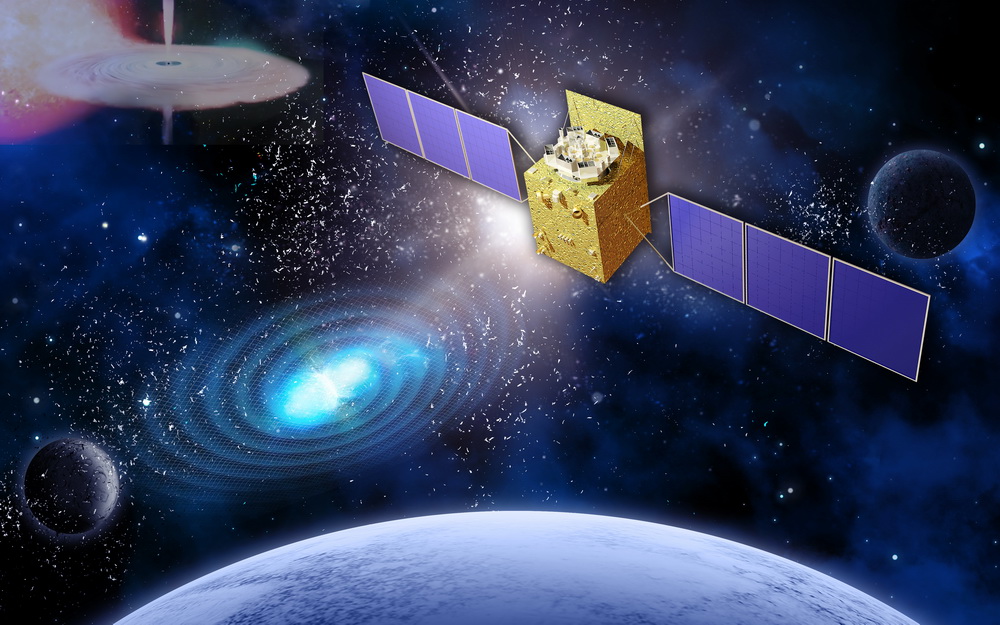China Launches its First Space-Based X-ray Telescope
China's first homegrown X-ray telescope, which aims to survey the Milky Way to observe celestial sources of X-rays, lifted off into space at 11:00 AM,local time, June 15.
Onboard the CZ-4B rocket, the Hard X-ray Modulation Telescope (HXMT) was launched from the Jiuquan Satellite Launch Center, in northwest China.
Scientists hope to use the device to resolve mysteries such as the evolution of black holes and the strong magnetic fields of neutron stars, enhancing China's competence in the field.
"The satellite aims at creating a high precision hard X-ray sky map and discovering new hard X-ray sources, including possible new types of objects in the Milky Way," said Prof. Zhang Shuangnan, lead scientist of HXMT and director of the Key Laboratory of Particle Astrophysics at the Institute of High Energy Physics (IHEP), Chinese Academy of Sciences.
Zhang added that HXMT will be of key importance to understand the physics of celestial X-ray sources, the emission mechanisms of the radiation at work and other issues of fundamental physics.
"There are three main payloads onboard HXMT: the high energy X-ray telescope (20-250 keV, 5100 cm2), the medium energy X-ray telescope (5-30 keV, 952 cm2), and the low energy X-ray telescope (1-15 keV, 384 cm2)," explained Prof. Lu Fangjun, chief designer of the payloads of HXMT.
All three telescopes are collimated instruments. Using a new direct demodulation method and scanning observations, HXMT can obtain high quality X-ray images of the regions observed, while the large detection areas of these telescopes also allow pointed observations with high statistics and high signal to noise ratio, said Lu.
This will allow the telescope to work over a wide energy range from 1 to 250 keV, enabling it to make many observations which previously required several satellites.
IHEP is leading the development of the HXMT, which is China's first X-ray astronomical satellite. It was proposed by IHEP scientists Li Tibei and Wu Mei, based on their innovative direct demodulation image reconstruction method.
In June 2016, the HXMT satellite team released their first announcement on the core scientific observation proposal. A total of 90 core observation proposals were collected from 6 CAS institutes and 10 colleges and universities, with a total observation demand for nearly 7 years. On the basis of scientific assessment and selection, observations in the first year of operation of the HXMT satellite have been scheduled.
The 5th day after the launch, HXMT's scientific instruments will be powered for the following 5 days as an overall functional test. A performance test, on-orbit calibration observations and test observations will be the main tasks of the next 140 days.
The telescope's first round of regular scientific observations is planned to start in November 2017. The second round of scientific observation proposals is expected to be collected in mid-2018.
Contact Information
Mr. Guo Lijun
ljguo@ihep.ac.cn

